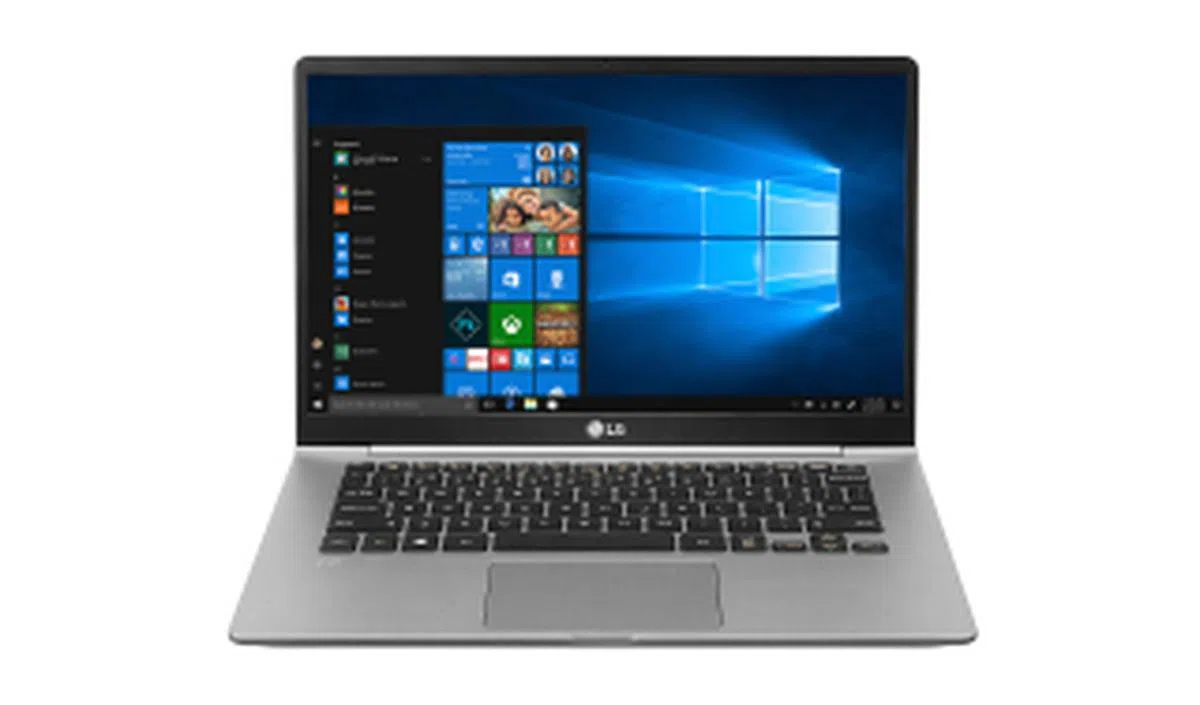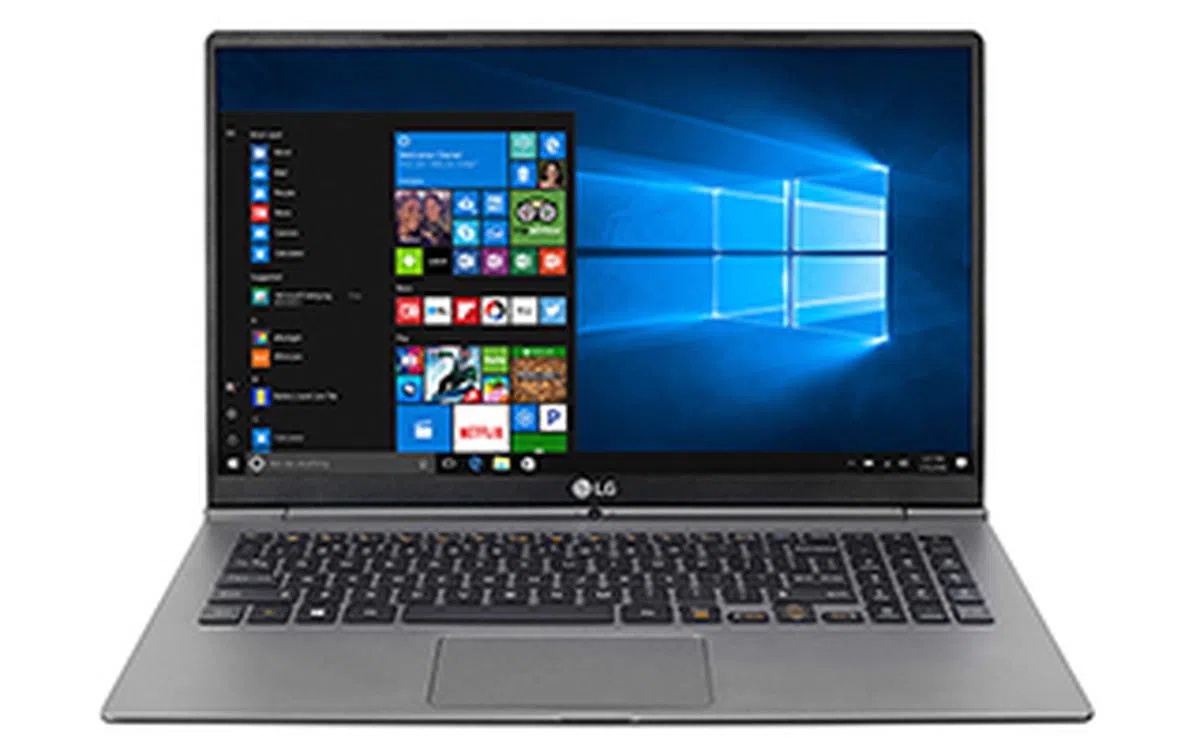Note: This article was first published on 7th July 2018.
Light as air

LG has updated its gram notebooks with the latest 8th generation Intel Core processors.
LG updated its gram lineup of notebooks last year just before CES 2018 with the latest 8th generation Core processors. It took them a while but LG finally launched the notebooks here in May. And now that we have had the chance to handle and test the notebooks in our labs, here’s our verdict on LG’s latest.
What’s not new?
Since the new gram notebooks are largely similar to last year’s models, let’s start by highlighting a couple of important things that are unchanged.

The design is unchanged, which is probably a good thing since it means the new gram notebooks still sport full-size USB Type-A ports.
Design - Yup, as you can see, the new gram notebooks are identical in terms of design. Their dimensions are unchanged too.

The keyboard flexes especially if you type purposefully.
Materials - The gram notebooks still have what LG calls ‘Nano Carbon Magnesium’ alloy chassis - a blend of magnesium and carbon fiber. Unfortunately, this also means that chassis flex is still present. This is just the nature of the alloy and doesn't mean that the notebook isn't strong. In fact, as you will find out later, the new gram actually meets MIL-STD-810G standards of ruggedness and can withstand up to 200kg of pressure.
Ports - The selection of ports are also largely unchanged, except for one particular SKU which we will talk about later. This makes the gram one of the few ultraportables currently on sale to come with full-size USB Type-A ports. The downside, of course, is that the gram is thicker than its rivals. However, it makes up for that with its low weight.
What’s new?
Processors - The gram notebooks have all been updated to feature Intel’s newest 8th generation quad-core Core processors. The gram 13 will only come with the Core i5-8250U while the gram 14 and 15 will come in two SKUs, one with the Core i5-8250U and the other with the Core i7-8550U. Here are all the various SKUs available.
LG gram 13 | |||
Processor | Memory | Storage | Price |
Intel Core i5-8250U | 8GB | 512GB SSD | S$1,999 |
LG gram 14 | |||
Processor | Memory | Storage | Price |
Intel Core i5-8250U | 8GB | 512GB SSD | S$1,999 |
Intel Core i7-8550U | 8GB | 512GB SSD | S$2,399 |
LG gram 15 | |||
Processor | Memory | Storage | Price |
Intel Core i5-8250U | 8GB | 512GB SSD | S$2,099 |
Intel Core i7-8550U | 8GB | 512GBSSD | S$2,599 |
Battery - All models get larger batteries. In the gram 13, the battery capacity is now 72Wh, up from just 34.6Wh. The gram 14 and gram 15 both now have 72Wh batteries as well, up from 60Wh.
Weight - Unfortunately, the substantially larger battery of the gram 13 means it has put on weight. As a result, the gram 13 now weighs 965g - that's 125g more than last year’s model. It is still a remarkably light notebook, but this year’s model does not invoke the same sense of wonderment as last year’s. At just 840g, last year’s gram 13 was incredibly, almost ridiculously, light. The weights of the gram 14 and gram 15 are mostly unchanged at 995g and 1,095g respectively.

The power button doubles up as a fingerprint scanner for fast and secure logins.
Fingerprint scanner - The power button doubles up as a fingerprint scanner and can log users in very quickly. However, Windows Hello isn't supported.
Thunderbolt 3 - This only applies to the gram 15 with Core i7 processor. That particular SKU is the only one that comes with a Thunderbolt 3 port. Yes, it’s an odd choice and we don’t buy LG’s explanation that only buyers of that particular notebook will likely need a super fast interface. If you are going to have a USB-C port, it might as well be Thunderbolt 3.
Webcam - The webcam has been repositioned to the top of the display. No more unflattering video angles. Hooray!

The gram notebooks may be as light as a feather but they were designed to be rugged.
MIL-STD 810G - A common criticism of the gram notebooks is that they feel somewhat flimsy. But that’s inherent to the materials used. They are in fact very strong. To prove their point, the new gram notebooks meet the MILD-STD810G standards of ruggedness. It is dust, shock, temperature, and pressure resistant. Most impressively, it can withstand up to 20Gs of shock and 200kg of pressure. If you still find it difficult to stomach how a super thin and light notebook can still be that robust, this live demo should instill the confidence you seek:-
Touchscreen - Last year gram notebooks have no touchscreen. Now, the gram 13 will come with touchscreen capability, but only the gram 13. The gram 14 and 15 will still come with regular displays so don’t be poking around on their screens.

The gram 14 only comes in 'dark silver.'
Colors - The gram 13 and 15 will only be available in white, while the gram 14 will come in ‘dark silver’, which is really just a fancy way of saying grey. Personally, I very much prefer the dark silver finish on the gram 14 since the white finish on the gram 13 and 15 is far too striking for my tastes and stains could be a concern. Your mileage may vary, of course.
Ok, so how do they perform?
Since the gram 13 only comes in a single configuration with a Core i5-8250U processor, 8GB of RAM, and a 512GB SSD, that’s the one we are testing. As for the gram 14 and 15, we are testing the more powerful Core i7 variants, which also have 8GB of RAM and 512GB SSDs. Key comparisons will be against last year’s gram 14 as well as the latest Dell XPS 13 and HP Spectre notebooks.
In summary, the new gram notebooks, thanks to their newer faster processors, were mostly faster than last year’s gram 14. This is especially apparent on graphics workloads. However, they were noticeably slower than the XPS 13, which is also powered by the same 8th generation Core processor. This is likely due to the fact that the new gram notebooks are still using single-channel memory. As our past experience tells us, single-channel memory has a rather significant adverse impact on performance. This is especially evident on graphics workloads where the XPS 13 was significantly faster.
If you want to study their performance in greater detail, scroll down to see the performance charts.
Here is the list of benchmarks used:
- PCMark 10
- PCMark 8
- 3DMark
- Far Cry 2
- Tomb Raider





What about battery life and portability?
Portability is a bit of a mixed bag. Usually, a newer processor would mean better efficiency, but it could be that these new quad-core parts from Intel are actually more power hungry. However, it is important to note that our battery test is quite intensive as it cycles through productivity tasks as well as GPU-intensive creative tasks and light gaming. As the charts below show, power consumption is up across all three models. So despite being outfitted with larger batteries, battery life for all three models are all shorter than the gram 14 from last year. Nevertheless, battery life is still miles better than the competition.



Is it worth upgrading if you have last year’s gram?

This is last year's model, but I doubt you would have known if I didn't tell you.
No. Last year’s gram models are still great notebooks. You don’t lose much in terms of performance and you get a much longer battery life, especially with last year’s gram 14. Unless some of the new features are really important to you, like the repositioned webcam and fingerprint scanner, I say stick to your 2017 gram notebooks and save your coin for other stuff.
How does it compare to other ultraportables like the Dell XPS 13?

If performance is a priority, the Dell XPS 13 is worth a close look.
The latest XPS 13 from Dell is possibly the most well-rounded ultraportable we have reviewed thus far. It is pricier than the gram by a fair bit but you do get substantially better performance and more features (Windows Hello support, Thunderbolt 3 ports, etc.). The gram notebooks combat with their lightweight construction, longer battery lives, full-sized USB/HDMI ports and more accessible price tag. Both are great options and it really boils down to your preferences and priorities. If a long battery life is important to you, the gram may be a better bet even if it isn’t as powerful (you won't notice the difference in your standard office work). However, if performance is more important and you can afford it, the XPS 13 is a great pick.
Any other final thoughts?

The latest gram notebooks don't offer much improvements over its predecessors, but they are still ideal for anyone who needs a lightweight companion.
On a whole, the new gram notebooks are largely similar to last year’s models. You gain some performance, but you also lose some in battery life. New features such as the fingerprint scanner are nice to have, but not really enticing enough to make users want to upgrade. The repositioned webcam is a thoughtful touch, though. As I mentioned earlier, if you already have last year’s gram, hold off from upgrading this year.
For new buyers, however, the gram is an attractive proposition. It isn’t the most affordable ultraportable around, but they are reasonably priced - in fact similar to last year's gram models, but you get better hardware from the 2018 edition. Plus, the configurations that they come in gives buyers greater freedom to choose. For the gram 14 and 15 models, the only differentiator is the processor, both SKUs come with the same 8GB of RAM and 512GB SSD. Personally, I would go for the Core i5 model since the difference in performance (between the Core i7-8550U and Core i5-8250U) isn’t all that great and I still get a generous 512GB SSD.
In closing, much like its predecessors, the new gram notebooks, with its light weight and long battery lives, are ideal for anyone who spends a lot of time running around, or anyone who just wants an ultra-light notebook.
<img alt="" src="https://cassette.sphdigital.com.sg/image/hardwarezone/be4e0976a78ecdbba812ae4fc43cc01a5b0a0f1238eb4059231cabaf112cad76" style="width: 320px; height: 188px;" title="LG gram 13 (2018)
"> | |
 | |
 |
Our articles may contain affiliate links. If you buy through these links, we may earn a small commission.
